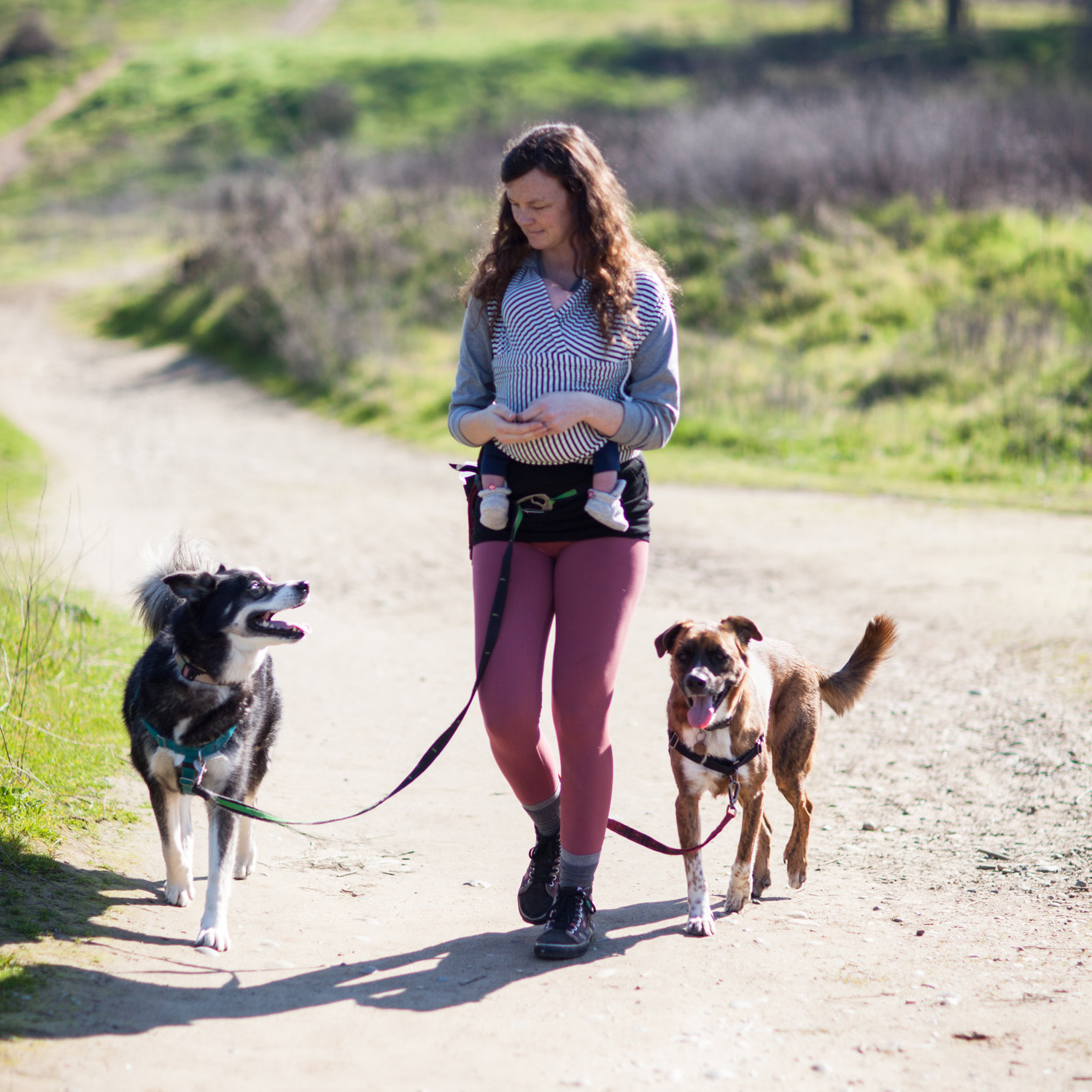Oftentimes when people begin to look into dog and baby prep, they are really focused on homecoming - that initial life-changing upheaval of a dog’s life that is bringing a new baby home. And don’t get me wrong, that’s a huge moment, and preparing ahead of time can really be instrumental in getting off on the right foot. But as the Family Paws saying reminds us: Babies grow, dogs age, adjust management at every stage.
My son is now ten months old (I’ve been writing these guides about a month or so late pretty consistently now!) and I can’t believe what a little kid he is starting to become! The older he gets the more fun we have, but many of the developmental changes come along with new challenges for the dogs - let’s discuss some of those changes and how we can prepare for them:
Crawling
Around this time, your baby is likely on the move! Wiley’s particular crawl is started out as much more of a slither for the first month or so, but the point is - he is MOBILE! Mobility is a huge change for dogs living with babies. Now, they are no longer safe simply stationing on their bed or mat nearby, as baby can easily begin moving towards them.
At this stage, having success stations like crates and x-pens is super important, especially when the dogs are being fed or being given high value items like chewies or stuffed KONGS. In some cases, two layers of management (ie an x-pen around a crate) can be a good idea, as babies can quickly make their way over to a barrier and may stick fingers or hands through which can be unsafe. When success stations aren’t in place, full, awake supervision from an adult is a must. Putting yourself between the dog and baby can help prevent unwanted contact.
You can also reward your dog for choosing to move away from the baby. People often assume a dog will move if they’re uncomfortable, but a dog may feel compelled to stand their ground if they’re in a comfy resting space, near a special person (you), or a valuable resource (food, toys, etc).
Pulling Up to Stand
Your little one is likely ready for a new outlook on life and may be experimenting with pulling up to stand at this age. Once Wiley started standing, he’s been adamant about standing as much as possible! He pulls up on the couch, the coffee table, his activity cube, his crib - you name it.
Around this stage, it’s super important to make sure you’re supervising to prevent your dog from becoming an object your kiddo uses to pull himself up on. Most dogs will not appreciate being handled in this rough and uncomfortable way, and even a dog that tolerates it may become more and more wary of the baby if caregivers don’t intervene.
Be mindful of the fact that whereas once, sitting on a couch or bed may have been a safe place for your dog to get away from the baby, now those surfaces may be the very places baby is most interested in exploring - and this is a recipe for an up-and-close face-to-face encounter that should be avoided.
If you’re using baby gates or x-pens for management, it’s important to make sure they are secure and strong, as they can easily become props for your baby’s newfound pastime. If your dog has a history of space guarding or inappropriately using their mouth, whether that means actually biting or simply mouthing, it’s vital to use an extra layer of management to ensure that baby’s little hands stay safe.
Increased Interest in Interaction
The interest Wiley has in our animals continually grows as he does! In the last installment of this series, I talked about reaching towards the dogs. This is definitely still going on, and the need to block continues, however at this age his interest has expanded. Now, in addition to wanting to touch the dogs, he also notices that there are a variety of ways to interact with them. He frequently tries to offer them items (toys, food, leaves - literally whatever he has), has experimented with throwing things for (at) them, and because he is mobile, he will also move towards them in an attempt to interact.
There are a lot of ways you can start approaching these new attempts at interaction. First and foremost, continuing to block physical contact whenever the dogs are not instigating an interaction. Parent-guided petting is also still the best choice at this age, as we are quite a ways off from our little ones learning to control their fingers and pet without squeezing or pinching.
As I mentioned above, this may be a time when two layers of management are needed - for example to prevent little hands from reaching into a crate.
However you may also begin to facilitate appropriate interactions, depending on your dog’s temperament and interests. Wiley has recently learned to throw a ball, and although my dogs are not particularly impressed or interested, my dad’s puppy was happy to play a game of guided fetch - Wiley threw the ball towards the pup (sometimes I helped if it didn’t quite go in the intended direction), the pup chased or caught the ball, I retrieved the ball from the pup and handed it back to Wiley. This version of fetch is great because it eliminates the need for the baby to take something from the dog, which is super important.

